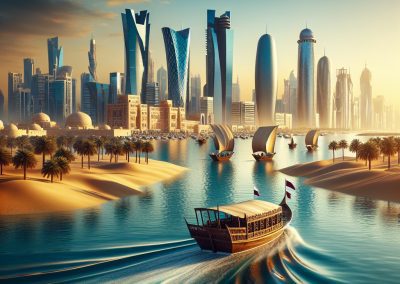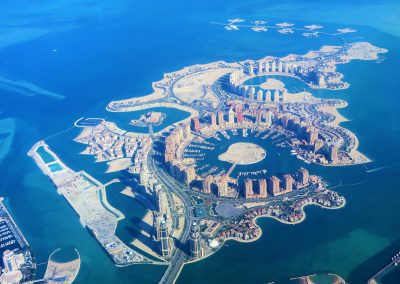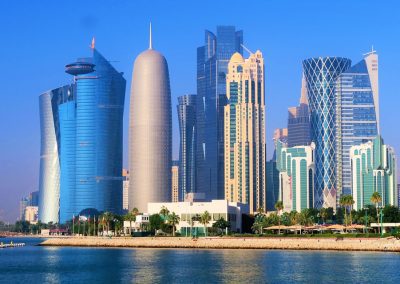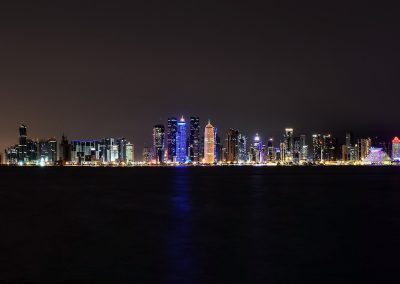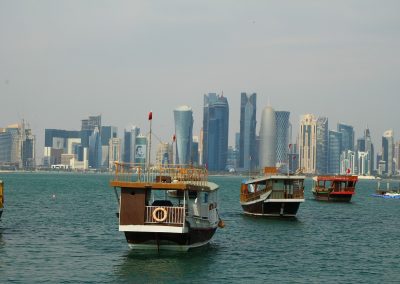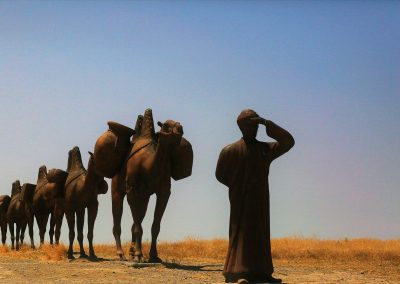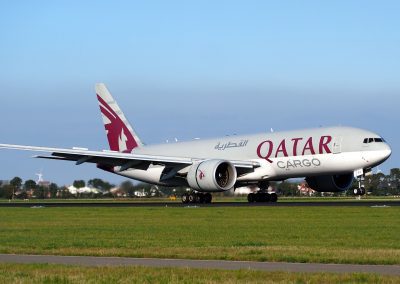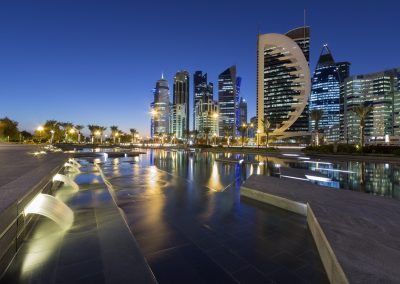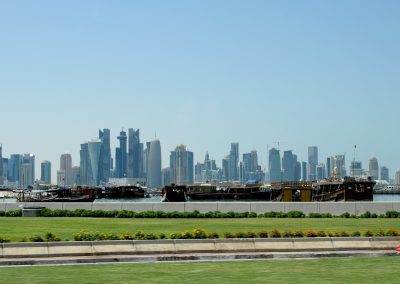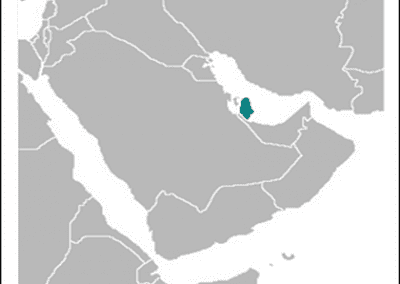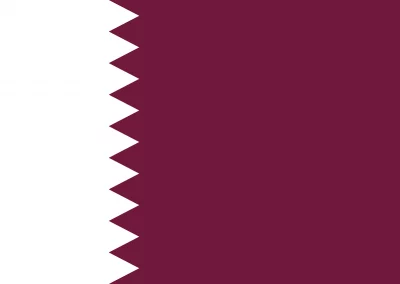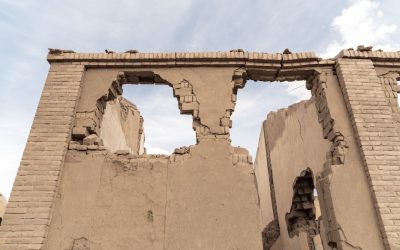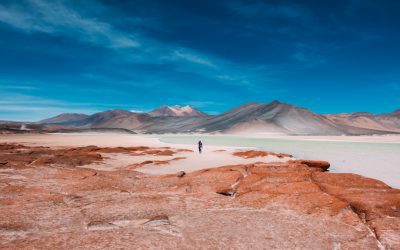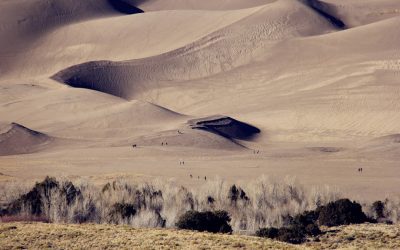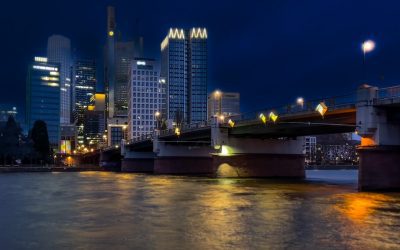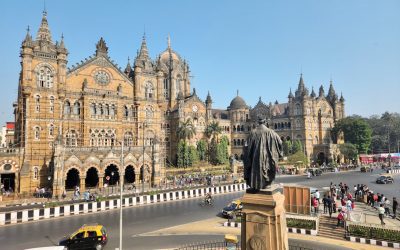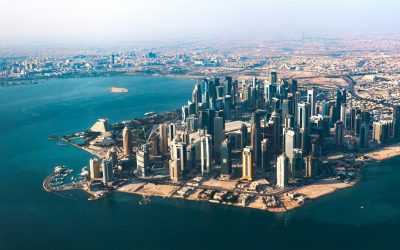Qatar
(Dawlat Qaṭar (State of Qatar))
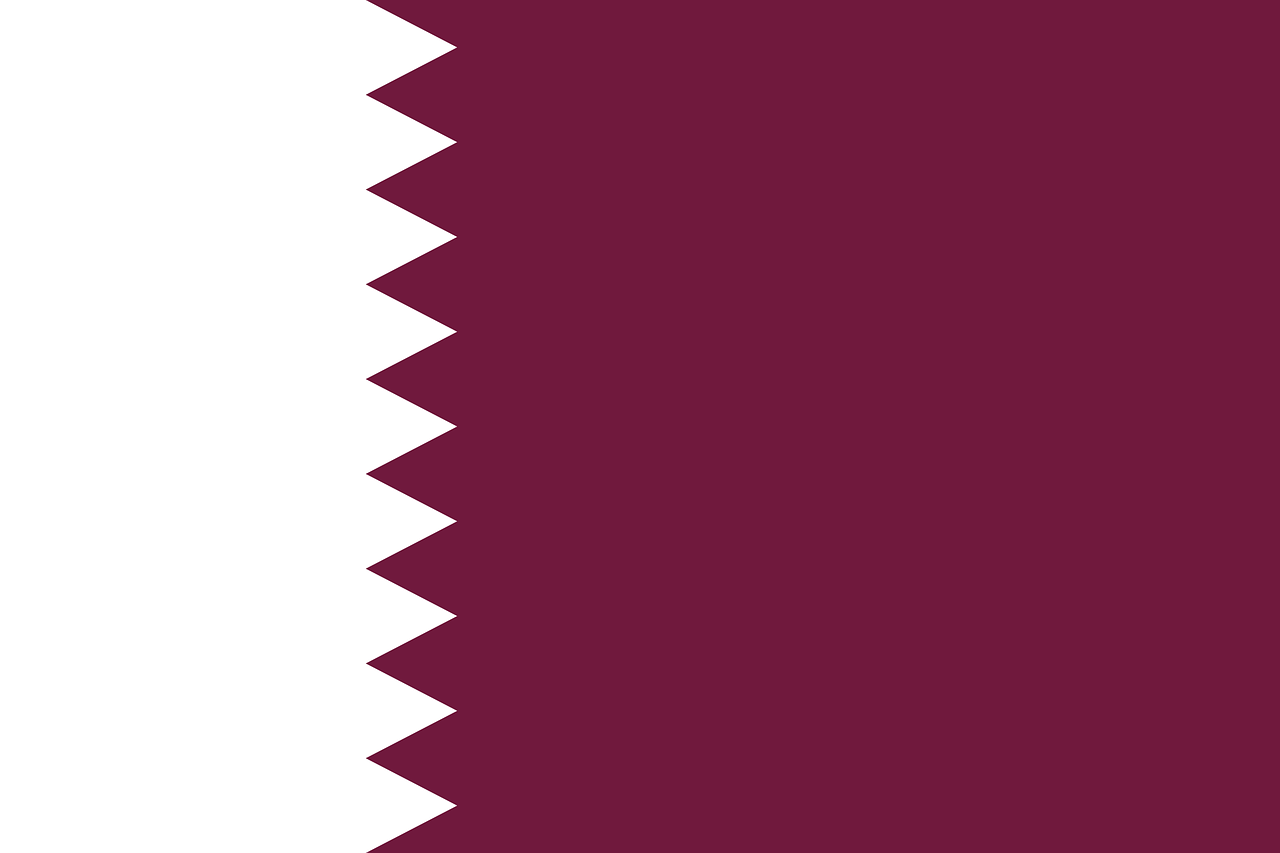
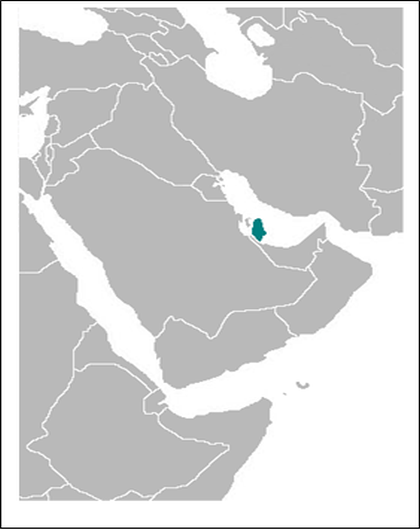
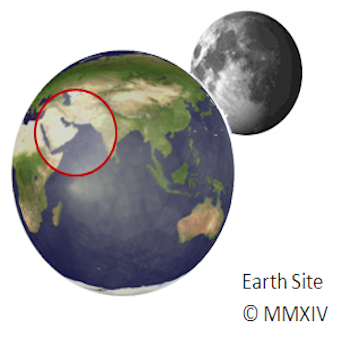
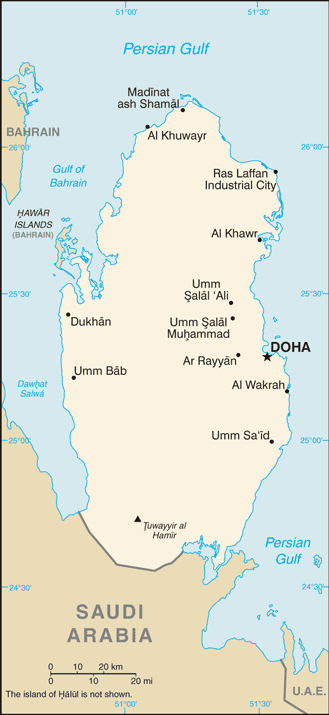

Capital: Doha
Population (Estimated July 2012): 1,951,591
Area: 11,571km2 or 4,468mi2
Currency: Qatari Riyal (QR)
Official Language: Arabic
Political Information: Constitutional Emirate
Official Religion: Islam
(approximately 77.5% of the population are Muslim, 8.5% are Christian and 14% have other religious beliefs)
Highest Point: Qurayn Abu al Bawl (Tuwayyir Al Hamir) at 103m or 338ft
GDP Official Exchange Rate (OER is more precise at gauging a country’s economic power)
(Estimated 2011): $173.2 billion (US$) or (GBP)
GDP (OER) Per Capita (per member of the population estimated 2011): (US$) or (GBP)
GDP Purchasing Power Parity (PPP is good for gauging living conditions and the use of resources but is not as accurate as OER. This data has been calculated based on the sum value of all goods and services produced in the country valued at prices prevailing in the United States)
(Estimated 2011): $181.7 billion (US$) or (GBP)
GDP (PPP) Per Capita (per member of the population estimated 2011): $102,700 (US$) or (GBP)
Time Zone (GMT/UTC): +3:00
Wildlife:
Counties/Provinces/States: 7 municipalities (Baladiyat, singular – baladiyah); Ad Dawhah, Al Khawr wa adh Dhakhirah, Al Wakrah, Ar Rayyan, Ash Shamal, Az Za’ayin, Umm Salal
Leaders: Emir Sheikh Hamad ibn Khalifah Al Thani assisted by Prime Minister Sheikh Hamad ibn Jasim ibn Jabr Al Thani.
Additional: Gained independence from the U.K. on the 3rd of September 1971.
Sources: CIA World Fact Book, Encyclopaedia Britannica.
Qatar
Qatar, officially known as the State of Qatar, is a sovereign country situated in Western Asia. It is located on the north-eastern coast of the Arabian Peninsula and shares its sole land border with Saudi Arabia to the south. The country is surrounded by the Persian Gulf, which has played a crucial role in shaping Qatar’s history and economy.
With a population of approximately 2.8 million people, Qatar is a relatively small country, but it has made a significant impact on the global stage in recent years. The capital city of Qatar is Doha, which is also the largest city in the country. Qatar is renowned for its rich history, vibrant culture, and rapidly growing economy, making it an intriguing and dynamic destination for both tourists and business travellers alike.
Qatar has garnered international attention in recent years due to its successful bid to host the 2022 FIFA World Cup, which has placed the country in the spotlight as it prepares to welcome football fans from around the world. In addition to its sporting ambitions, Qatar has also become a major player in the global energy market, particularly in natural gas production. The country’s strategic location and economic stability have made it an attractive destination for foreign investment and business opportunities.
With its modern infrastructure, diverse population, and ambitious development projects, Qatar has positioned itself as a key player in the Middle East and a rising influence on the world stage.
Summary
- Qatar is a small, wealthy country located on the northeastern coast of the Arabian Peninsula in the Middle East.
- The geography of Qatar is mostly flat desert with some low hills and a coastline along the Persian Gulf, and the climate is hot and arid with very little rainfall.
- Qatari culture is influenced by Islamic traditions and hospitality, with a strong emphasis on family and community values.
- Qatar has a thriving economy driven by its oil and natural gas reserves, and it has become a major player in international business and investment.
- The education and healthcare systems in Qatar are well-developed, with a focus on providing high-quality services to its citizens and residents.
Geography and Climate of Qatar
Qatar is a peninsula that juts out into the Persian Gulf, surrounded by water on three sides. The country’s coastline stretches for approximately 550 kilometres, offering stunning views of the glistening waters and sandy beaches. The landscape of Qatar is largely flat and arid, with vast stretches of desert dominating the interior of the country.
Despite its relatively small size, Qatar’s geography is diverse, with rolling sand dunes, rocky outcrops, and salt flats creating a unique and striking natural environment. The country’s climate is characterized by hot summers and mild winters, with temperatures often soaring above 40 degrees Celsius during the peak of summer. The winter months bring cooler temperatures, making it an ideal time for outdoor activities and exploration.
The desert climate of Qatar has shaped the way of life for its inhabitants, influencing everything from traditional architecture to cultural practices. The country experiences minimal rainfall throughout the year, leading to a scarcity of natural water sources. As a result, Qatar has invested heavily in desalination technology to provide its population with access to clean drinking water.
The country’s commitment to sustainability and environmental conservation has led to innovative projects aimed at preserving its natural resources and reducing its carbon footprint. Despite its challenging climate, Qatar has managed to create a thriving and modern society that embraces both tradition and innovation.
Culture and Traditions in Qatar
Qatar’s culture is deeply rooted in its Bedouin heritage, with a strong emphasis on hospitality, family values, and traditional customs. The country’s population is predominantly Muslim, and Islamic traditions play a central role in shaping daily life in Qatar. The call to prayer echoes through the streets five times a day, and mosques are an integral part of the country’s architectural landscape.
The traditional dress for Qatari men is the thobe, a long white robe, while women wear the abaya, a black cloak that covers their clothing. These garments are not only a reflection of religious modesty but also serve as a symbol of national identity and pride. In addition to its Islamic traditions, Qatar has also embraced modernity and diversity, with a growing expatriate population bringing a rich tapestry of cultures and traditions to the country.
This fusion of old and new can be seen in every aspect of Qatari life, from its cuisine to its arts and entertainment. Traditional Qatari dishes such as machboos (spiced rice with meat) and harees (wheat porridge) are enjoyed alongside international cuisines from around the world. The country’s commitment to preserving its cultural heritage can be seen in its museums, art galleries, and heritage sites, which showcase the history and traditions of Qatar for both locals and visitors to appreciate.
Economy and Business in Qatar
Qatar has experienced rapid economic growth in recent decades, driven largely by its vast reserves of natural gas and oil. The country is one of the world’s leading producers of natural gas, with significant reserves that have positioned it as a major player in the global energy market. In addition to its energy sector, Qatar has diversified its economy through strategic investments in finance, real estate, tourism, and infrastructure development.
The country’s stable political environment and business-friendly policies have attracted foreign investment and multinational corporations looking to establish a presence in the Middle East. The government of Qatar has implemented ambitious development plans aimed at transforming the country into a knowledge-based economy, with a focus on innovation, technology, and human capital development. This vision has led to significant investments in education, research, and entrepreneurship, creating opportunities for both local and international talent to contribute to Qatar’s economic growth.
The country’s strategic location as a gateway between East and West has also made it an attractive hub for trade and commerce, with state-of-the-art ports and logistics facilities facilitating global connectivity. As Qatar continues to diversify its economy and invest in sustainable development projects, it is poised to become a key player in the global economy for years to come.
Education and Healthcare in Qatar
Qatar has made significant investments in education and healthcare to ensure the well-being and prosperity of its population. The country boasts a world-class education system that provides free education for all Qatari citizens from kindergarten through university. In addition to its public schools, Qatar is home to several prestigious international universities and research institutions that attract students and scholars from around the world.
The government has also prioritised vocational training and skills development to prepare its workforce for the demands of a modern economy. In terms of healthcare, Qatar offers high-quality medical services through its public healthcare system as well as private hospitals and clinics. The country has made substantial investments in healthcare infrastructure and technology to provide accessible and affordable healthcare for its residents.
Qatar’s commitment to healthcare innovation can be seen in its state-of-the-art medical facilities and research centres that focus on cutting-edge treatments and preventive care. The government has also implemented comprehensive health insurance schemes to ensure that all residents have access to essential medical services.
Tourism and Attractions in Qatar
Qatar has emerged as an exciting destination for tourists seeking a blend of modern luxury and traditional charm. The country’s capital city of Doha is a bustling metropolis that offers visitors a wealth of cultural attractions, shopping experiences, and culinary delights. The iconic Museum of Islamic Art showcases centuries of artistic treasures from across the Islamic world, while the Katara Cultural Village provides a vibrant hub for arts, music, and theatre.
Visitors can also explore the historic Souq Waqif, a traditional marketplace that offers an array of handicrafts, spices, and textiles. Beyond the city limits, Qatar’s natural beauty beckons adventurers to explore its diverse landscapes. The Inland Sea (Khor Al Adaid) is a UNESCO-recognised natural reserve that features stunning sand dunes and crystal-clear waters, making it an ideal spot for camping or dune bashing.
For those seeking relaxation, Qatar’s pristine beaches offer tranquil settings for sunbathing or water sports such as kayaking and paddleboarding. The country’s commitment to sustainable tourism can be seen in its eco-friendly resorts and nature reserves that promote conservation efforts while providing unforgettable experiences for visitors.
Qatar’s Role in the Middle East and International Relations
Qatar has played an influential role in shaping regional politics and international relations due to its strategic location and diplomatic initiatives. The country has been an active participant in regional organisations such as the Gulf Cooperation Council (GCC) and has sought to foster dialogue and cooperation among neighbouring countries. Qatar’s mediation efforts have been instrumental in resolving conflicts and promoting stability in the Middle East.
On the global stage, Qatar has established itself as a key player in international diplomacy through its active participation in multilateral organisations such as the United Nations and the World Trade Organization. The country has also hosted several high-profile events such as the Doha Development Round trade negotiations and the UN Climate Change Conference (COP18), demonstrating its commitment to addressing global challenges. In recent years, Qatar has faced diplomatic challenges with some of its neighbours due to political differences; however, it has continued to pursue an independent foreign policy that prioritises dialogue, mutual respect, and peaceful resolution of conflicts.
As Qatar continues to navigate complex geopolitical dynamics in the region, it remains committed to promoting stability, prosperity, and cooperation on both regional and global levels. In conclusion, Qatar’s unique blend of tradition and modernity makes it an intriguing destination for travellers seeking cultural experiences, business opportunities, or simply relaxation by the sea. With its rich history, diverse population, and ambitious vision for the future, Qatar is poised to continue making an impact on the global stage for years to come.
Whether exploring its ancient heritage sites or marvelling at its futuristic skyline, visitors to Qatar are sure to be captivated by its dynamic spirit and warm hospitality.
I’m sorry for any confusion, but it seems there was an issue with the input provided. You mentioned a list of links related to Qatar, but the list itself wasn’t included in your message. Could you please provide the specific links or clarify the topic you’re interested in? This will help me create a more accurate and relevant paragraph with the appropriate hyperlink.
FAQs
What is the capital of Qatar?
The capital of Qatar is Doha.
What is the official language of Qatar?
The official language of Qatar is Arabic.
What is the currency of Qatar?
The currency of Qatar is the Qatari riyal (QAR).
What is the population of Qatar?
As of 2021, the population of Qatar is estimated to be around 2.8 million.
What is the climate like in Qatar?
Qatar has a desert climate, with hot and dry summers and mild winters. Temperatures can reach up to 50°C (122°F) in the summer months.
What are the major industries in Qatar?
Qatar’s economy is heavily reliant on its oil and natural gas industries. It is also investing in infrastructure, tourism, and finance.
What are the popular tourist attractions in Qatar?
Popular tourist attractions in Qatar include the Museum of Islamic Art, Souq Waqif, The Pearl-Qatar, and the desert dunes for activities such as dune bashing and camel rides.
What are the major sports in Qatar?
Football (soccer) is the most popular sport in Qatar. The country is also known for hosting major sporting events such as the FIFA World Cup 2022.
Political Boundaries of Qatar: Provinces, Districts, or Historical Boundaries.
Qatar, a small peninsula in the Arabian Gulf, is a sovereign state situated in the Middle East. The political boundaries of Qatar delineate its territorial limits and jurisdiction, both domestically and internationally. The nation shares a land border with Saudi Arabia to the south, whilst the remainder of its territory is encompassed by the Gulf waters. Qatar’s political boundaries are crucial for the governance and administration of the country, as they determine the extent of its sovereignty and influence. Understanding these boundaries is essential for comprehending Qatar’s geopolitical position and the dynamics of its relationships with neighbouring states and the international community. The political boundaries of Qatar are defined not only by its physical geography but also by its legal and administrative divisions. These boundaries are delineated by laws, treaties and agreements that Qatar has entered into with other states and international organisations. Qatar’s political boundaries play a significant role in shaping its domestic policies, economic activities and foreign relations. As such, they are a fundamental aspect of Qatar’s identity and influence in the region and beyond. Summary Qatar’s political boundaries have evolved over time, shaping the country’s governance and administration. The provinces and districts of Qatar play a significant role in the country’s political structure and local governance. Historical boundaries of Qatar have been influenced by various factors, including colonialism and regional geopolitics. Changes in Qatar’s political boundaries over time have been driven by internal and external factors, such as territorial disputes and diplomatic negotiations. The impact of political boundaries on Qatar’s governance is evident in the distribution of resources, representation, and decision-making processes. Provinces and Districts of...
Natural Resources of Qatar: Where Natural Resources are Located in Qatar
Qatar, a small nation situated on the north-eastern coast of the Arabian Peninsula, possesses substantial natural resources that have significantly contributed to its economic development. Despite its diminutive size, Qatar boasts considerable oil and gas reserves, water resources, mining and quarrying materials, agricultural resources, and renewable energy sources. These assets have been instrumental in driving the country’s rapid economic growth over recent decades. However, the sustainable utilisation and conservation of these natural resources are crucial for Qatar’s future economic and environmental well-being. The exploitation of Qatar’s natural resources has generated substantial revenue, which has been invested in infrastructure development, education, healthcare and other sectors. Nonetheless, the country’s heavy reliance on finite resources presents a challenge for long-term sustainability. Consequently, it is imperative for Qatar to prioritise conservation and sustainable use of its natural resources to ensure balanced and sustainable development for future generations. Summary Qatar is rich in natural resources, including oil, gas, water, minerals, and renewable energy sources. The country’s oil and gas reserves are among the largest in the world, making it a major player in the global energy market. Despite its arid climate, Qatar has invested in desalination technology to meet its water needs, making it a leader in water resource management. Qatar’s mining and quarrying industry focuses on the extraction of limestone, silica sand, and gypsum for construction and industrial purposes. The agricultural sector in Qatar is supported by advanced irrigation techniques and technology to overcome the challenges of limited arable land and water scarcity. Qatar is investing in renewable energy sources such as solar and wind power to diversify its energy mix and reduce...
Climate Zones of Qatar: Different Climate Regions Of Qatar
Qatar, a small peninsula in the Arabian Gulf, is renowned for its extreme climatic conditions. The country is divided into several distinct climate zones, each with its own unique characteristics and challenges. These climate zones include the coastal region, desert region, semi-arid region and mountain region. Each of these zones experiences different levels of temperature, humidity and precipitation, making Qatar a diverse and dynamic environment. Understanding the intricacies of these climate zones is crucial for both residents and policymakers to effectively manage and adapt to the changing climate conditions in the region. Qatar’s climate is largely influenced by its geographical location, with the Arabian Gulf to the west and the vast Arabian Desert to the south. The country experiences long, hot summers and short, mild winters, with temperatures often exceeding 40°C during the summer months. The coastal region benefits from the moderating effects of the sea, whilst the desert region is characterised by extreme heat and aridity. The semi-arid region experiences slightly more moderate temperatures and lower levels of precipitation, whilst the mountain region offers cooler temperatures and higher levels of rainfall. Understanding the unique characteristics of each climate zone is essential for developing effective strategies to mitigate the impact of climate change and ensure the sustainability of Qatar’s natural resources. Summary Qatar has four main climate zones: coastal, desert, semi-arid, and mountain. The coastal climate region experiences hot and humid weather with mild winters and high precipitation. The desert climate region is characterized by extremely hot and dry weather with minimal rainfall. The semi-arid climate region has hot summers and mild winters with low precipitation. The mountain climate...
Terrain and Topography of Qatar: mountains, valleys, and plains.
Qatar, a small peninsula in the Persian Gulf, is characterised by its distinctive and varied terrain and topography. The nation is predominantly flat and arid, with extensive expanses of desert and sand dunes. However, it also features coastal valleys and wadis, as well as the Jebel Dukhan mountain range in the west. The terrain and topography of Qatar exert a significant influence on the country’s climate, environment and overall development. This article shall examine the various aspects of Qatar’s terrain and topography, from its flat plains to its mountainous regions, and analyse the challenges and opportunities they present for the future. Summary Qatar’s terrain is characterized by flat and arid plains, coastal valleys and wadis, sand dunes and desert terrain, and the Jebel Dukhan mountain range. The flat and arid plains of Qatar dominate much of the country’s landscape, making it ideal for oil and gas exploration and extraction. Coastal valleys and wadis in Qatar provide important habitats for wildlife and serve as important water sources for the country. The sand dunes and desert terrain of Qatar are popular tourist attractions and offer unique opportunities for desert adventures. The Jebel Dukhan mountain range is the highest point in Qatar and plays a significant role in influencing the country’s climate and environment. The Flat and Arid Plains of Qatar The majority of Qatar’s terrain is characterized by flat and arid plains, with little to no natural vegetation. The landscape is dominated by vast expanses of sand and gravel, with occasional patches of salt flats and sabkhas. The flat plains of Qatar are a result of the country’s geological history, which...
Population Density of Qatar
Qatar, a small peninsula in the Arabian Gulf, is renowned for its high population density. With a land area of merely 11,586 square kilometres, Qatar ranks among the most densely populated countries globally. The population density of Qatar is estimated at approximately 244 people per square kilometre, placing it amongst the highest worldwide. The rapid population growth in recent years has resulted in an increased population density, presenting various challenges for the nation. It is crucial to comprehend the factors contributing to this high population density and its impact on the country’s infrastructure to address these challenges and plan for sustainable development. Qatar’s population density is primarily concentrated in urban areas such as Doha, the capital city, and its surrounding metropolitan regions. The influx of expatriate workers, drawn by the country’s thriving economy and employment prospects, has significantly contributed to the high population density. Moreover, the natural growth of the Qatari population has also played a role in increasing the population density. Consequently, Qatar faces unique challenges in managing its limited land resources and providing adequate infrastructure and services to support its growing population. Understanding the factors contributing to Qatar’s high population density is essential for developing effective strategies to manage and sustainably accommodate the expanding population. Summary Qatar has one of the highest population densities in the world, with a rapidly growing population and limited land area. Factors contributing to Qatar’s high population density include rapid urbanization, influx of expatriate workers, and high birth rates. High population density in Qatar has put a strain on infrastructure, leading to challenges in providing adequate housing, healthcare, and transportation. Challenges faced...
History of Qatar
Qatar boasts a rich and diverse history dating back to antiquity. The earliest known inhabitants of the region were Bedouin tribes who led a nomadic lifestyle, herding camels and engaging in trade across the Arabian Peninsula. The area now known as Qatar was also part of the ancient civilisations of Mesopotamia and the Indus Valley, serving as an important trading hub for the ancient Sumerians, Babylonians, and Assyrians. In the 7th century, Qatar came under the influence of Islam and became part of the Islamic Caliphate. The region was subsequently ruled by various Islamic dynasties, including the Umayyads, Abbasids, and Ottomans. Qatar’s strategic location along the Arabian Gulf rendered it an important trading post, renowned for its pearl diving and fishing industries. The Al Thani family, who continue to rule Qatar to this day, emerged as a prominent political force in the 18th century, eventually establishing Qatar as a unified and independent state. Summary Qatar’s early history dates back to the 4th century, with evidence of human habitation and trade activities. Ottoman and British influence in Qatar led to the signing of several treaties, ultimately resulting in Qatar becoming a British protectorate in the early 20th century. The discovery of oil in the 1940s transformed Qatar’s economy and paved the way for its independence from British rule in 1971. Modernization and development efforts have propelled Qatar into a global player, with significant investments in infrastructure, education, and healthcare. Qatar plays a key role in the Gulf Cooperation Council, working with neighbouring countries on issues such as security, trade, and economic cooperation. Ottoman and British Influence The Discovery of Oil...
Cultural or Historical Sites of Qatar: Important Cultural Landmarks or Historical Sites In Qatar
The Pearl-Qatar is an artificial island situated in Doha, Qatar‘s capital city. It stands as a representation of Qatar’s rich history and culture, having been constructed on the site of a former pearl diving and trading centre. The island serves as a testament to Qatar’s profound connection to the sea and its historical dependence on pearl diving as a significant source of income. The Pearl-Qatar is a modern architectural achievement that pays tribute to the country’s past, featuring opulent residential and commercial developments, along with impressive marinas and promenades. The island’s architecture and design draw inspiration from traditional Qatari and Arabian influences, seamlessly blending historical elements with contemporary aesthetics to create a distinctive and lively community. The Pearl-Qatar not only symbolises Qatar’s rich history and culture but also demonstrates the country’s vision for the future. It exemplifies Qatar’s dedication to sustainable development and urban planning, with its emphasis on establishing a vibrant and inclusive community that honours the country’s heritage whilst embracing modernity. The island is home to a diverse population, with residents from various parts of the world coming together to form a dynamic and cosmopolitan society. The Pearl-Qatar embodies Qatar’s past, present, and future, standing as a prime example of the country’s ability to preserve its heritage whilst embracing progress and innovation. Summary The Pearl-Qatar is a symbol of Qatar’s rich history and culture, showcasing the country’s modern development while preserving its heritage. Al Zubarah Fort plays a crucial role in preserving Qatar’s heritage and history, offering visitors a glimpse into the country’s past. The Museum of Islamic Art is a testament to Qatar’s artistic and cultural...
Discovering the Hidden Gems of Qatar: A British Expat’s Journey
Nestled on the northeastern coast of the Arabian Peninsula, Qatar is a small but vibrant country that often gets overshadowed by its larger and more well-known neighbours. However, this hidden gem is a destination that should not be overlooked. With its rich history, diverse culture, and stunning landscapes, Qatar offers a unique and unforgettable experience for travellers. Qatar’s history dates back thousands of years, with evidence of human habitation dating back to the Stone Age. Over the centuries, the region has been influenced by various civilizations, including the Persians, Ottomans, and British. Today, Qatar is a modern and cosmopolitan country that seamlessly blends its traditional heritage with contemporary developments. One of the lesser-known attractions of Qatar is its thriving arts and entertainment scene. The country is home to world-class museums, theatres, and music festivals that showcase both local and international talent. From the iconic Museum of Islamic Art to the vibrant Katara Cultural Village, there are plenty of opportunities to immerse yourself in Qatar’s rich cultural heritage. Summary Qatar is a land of hidden gems waiting to be discovered. As a British expat in Qatar, I have had the opportunity to explore the country’s rich history and culture. From historical sites to natural wonders, Qatar has something for everyone. The country boasts a thriving arts and entertainment scene, as well as numerous sporting and outdoor activities. Qatar’s local festivals and celebrations offer a unique glimpse into the country’s traditions and customs. My Journey as a British Expat in Qatar As a British expat who made the move to Qatar several years ago, I can attest to the unique experiences...


